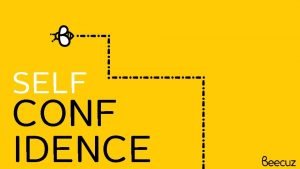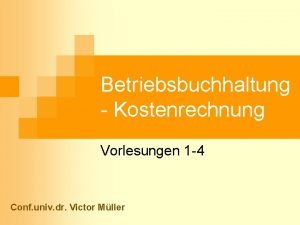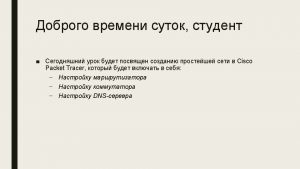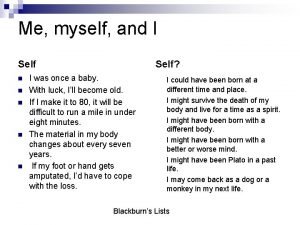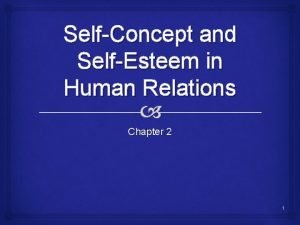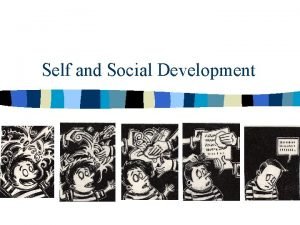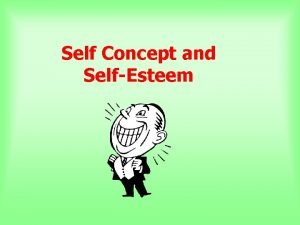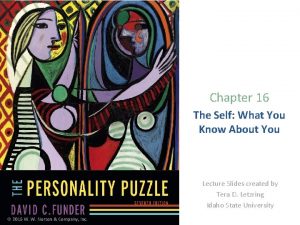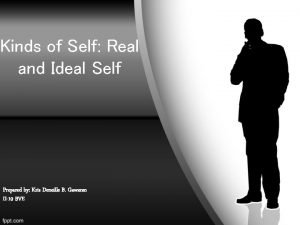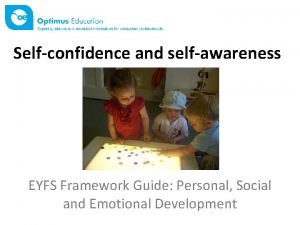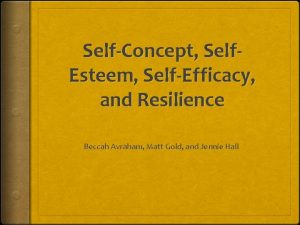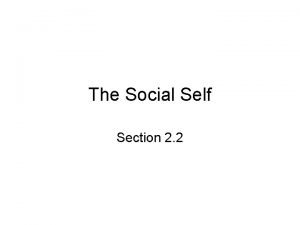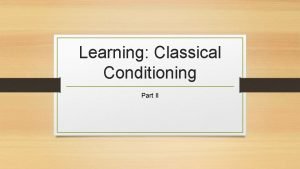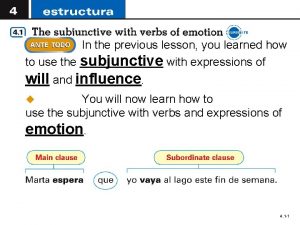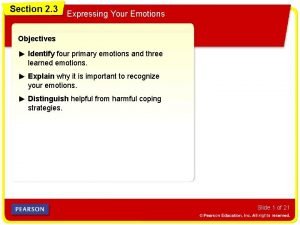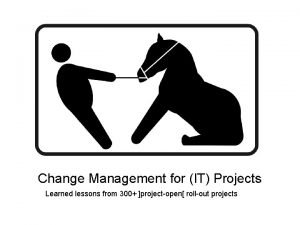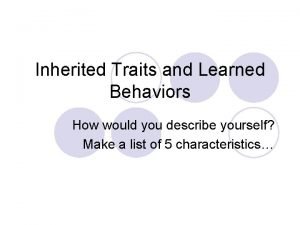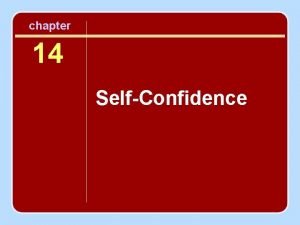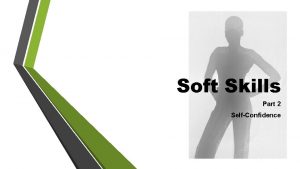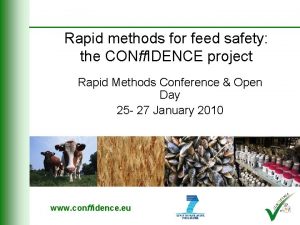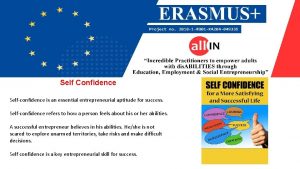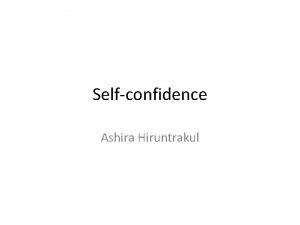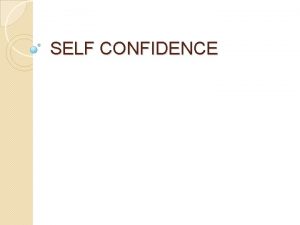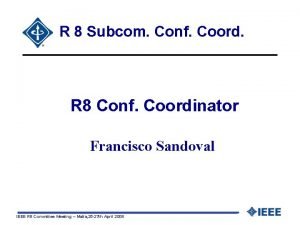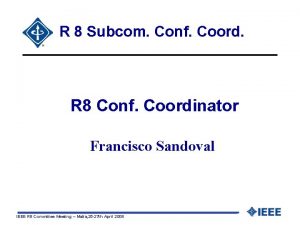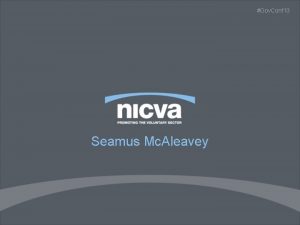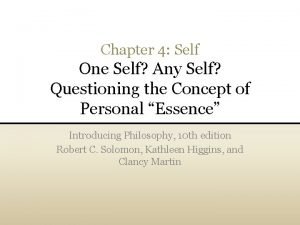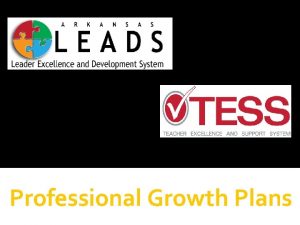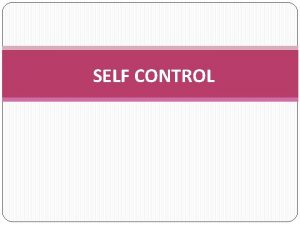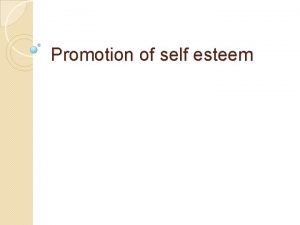SELF CONF IDENCE DISCUSSION Selfconfidence is a learned
































- Slides: 32

SELF CONF IDENCE

DISCUSSION


Self-confidence is a learned skill that can be developed through continuous practice.

Small actions and changes that make a big difference. BUILDING CONFIDENCE

Self-Talk Giving Yourself a Pep Talk • • What you tell yourself and how you interpret other people’s comments shapes your reality You are the author of your own story

“ “ When you own the story you can write a brave new ending Brené Brown


+ SELF AFFIR MATIONS Your way of giving yourself a pep-talk.

Positive self-affirmations are spoken or written statements that you tell yourself and which recognize your worthiness and value.

Example Affirmations I am a bright, capable and confident student.

Example Affirmations I am getting better every day.

Example Affirmations I can do anything that I put my mind to.

Example Affirmations I am worthy of love and belonging.

Example Affirmations I am brave enough to try.

PRACTICE

Example Scenario Part 1 Ira is a student in Grade 6 at Westville Public School. She is a good student and works hard, always finishing her homework and volunteering to help her teacher in the classroom. Ira is an incredible singer and spends her afternoons jamming out at home. But Ira is shy and has never sung publicly before. When Westville announced their first-ever talent show, Ira’s best friend dared her to sign up, and Ira agreed.

Example Scenario Part 2 At first, Ira was excited about the idea of sharing her voice but as the talent show drew nearer, she became more and more anxious and insecure. It’s the night of her performance and Ira is standing backstage. She has five minutes before her name will be announced and, despite having practiced every day for the last two weeks, Ira can’t help thinking about everything that might go wrong.

What negative thoughts might Ira be having? What might Ira be telling herself?

How would Ira’s confidence change if she changed her self-talk?

Make a mixed media collage depicting your best self. TURN… YOUR

Collage Media May Represent… 1. 2. 3. 4. 5. Who you are What you value Memorable accomplishments Defining experiences Dreams • You can use words or pictures. • Include the words “I am”, or “this is me” somewhere central on the collage

Self-Affirmations Use your collage as the foundation to construct 5 positive self-affirmations. Three Tips to Get You Started 1. 2. 3. Start with the words “I am” Make it believable it must pass the gut test Talk to yourself the way you would talk to a friend

BODY LANGUAG E Your body can also change your mind.

Body Language Research by Amy Cuddy • Nonverbal cues also govern how you think and feel about yourself • Dr. Amy Cuddy asked research participants to adopt either a high power or a low power pose for:

High Power Pose • Standing wide stance • Arms raised in a “V” above the head • Hands on hips • Arms crossed behind the head, sitting or standing

Low Power Pose • Sitting with hands folded in the lap • Arms crossed over the chest • One arm across the body in a self-hug • Hunching

Body Language High Power Pose • 25% decrease in cortisol (stress hormone) • 8% increase in testosterone (related to confidence, ambition, and energy) Low Power Pose • 15% increase in cortisol • 10% decrease in testosterone

“ “ Our bodies change our minds Amy Cuddy

Adopt a high-power pose for 2 minutes while you read your positive self-affirmations. TURN… YOUR

DISCUSSION

 Self conf
Self conf Splunk taiwan
Splunk taiwan Lambda conf
Lambda conf Hpsmh
Hpsmh Kalkulatorische zinsen
Kalkulatorische zinsen Conf t
Conf t Res_odbc.conf
Res_odbc.conf Conf t
Conf t Snmpapp.conf
Snmpapp.conf 1php
1php Example of real self and ideal self
Example of real self and ideal self Fractional distillation conclusion
Fractional distillation conclusion Me myself and i self concept
Me myself and i self concept Self concept vs self esteem
Self concept vs self esteem Contoh ideal self dan real self
Contoh ideal self dan real self Self image vs self perception
Self image vs self perception Self concept vs self esteem
Self concept vs self esteem Procedural self-knowledge includes ________.
Procedural self-knowledge includes ________. An idealized image that we have developed over time
An idealized image that we have developed over time Self confidence and self awareness eyfs
Self confidence and self awareness eyfs Self concept vs self esteem
Self concept vs self esteem I self and me self difference
I self and me self difference Molly was ecstatic when she learned her family
Molly was ecstatic when she learned her family In the previous lesson you have learned
In the previous lesson you have learned The three learned emotions are grief, shame, and
The three learned emotions are grief, shame, and Workday implementation lessons learned
Workday implementation lessons learned Elijah and obadiah
Elijah and obadiah Animal behavior biology
Animal behavior biology Latent learning psychology definition
Latent learning psychology definition Change management lessons learned
Change management lessons learned Lesson learned in typhoon yolanda
Lesson learned in typhoon yolanda How are inherited traits different from learned behaviors
How are inherited traits different from learned behaviors Difference between innate and learned behavior
Difference between innate and learned behavior
